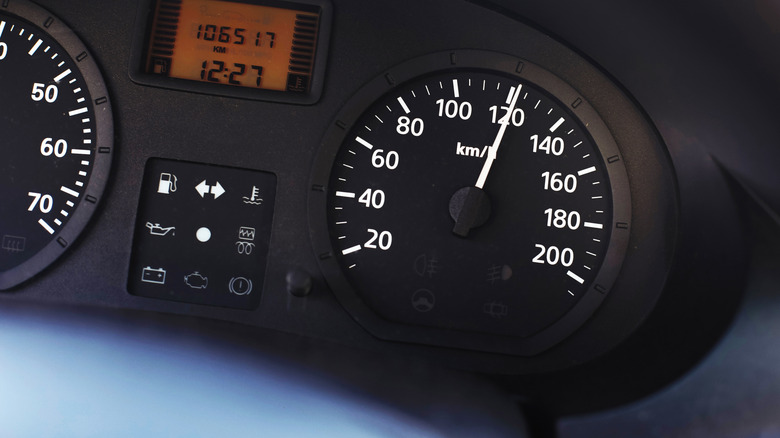Why Do Consumer Cars Have Top Speeds That Are Way Above The Legal Limit?
Unless you have the patience of a saint — or have never been close to missing a flight — chances are you push your car past the speed limit every now and then. Of course that compulsion can only move so quickly, but it doesn't help that even your quiet little Prius can be kicked far beyond most standard speed limits with little resistance. Why are the same machines equipped with countless mechanisms to prevent serious injury in the case of an accident also capable of hitting speeds that could very well cause an accident to begin with?
The reasoning comes down to a number of factors. Maintaining the engine's health and fuel efficiency is among these, as an engine often hitting top speed will wear out quicker. Even if your car is capable of hitting 200 mph, keeping it at the speed limit is for the best. Having an engine's maximum output equal the speed limit could tempt drivers stay at max capacity for longer, shortening the engine's life as a result. In emergency situations — such as avoiding road hazards or rushing to the hospital — exceeding the speed limit may be necessary..
Manufacturers also allow their cars to reach such speeds as a way of broadening their appeal. Advertising average consumer cars as being able to pull off such feats attracts motorheads and thrill seekers who may otherwise go for a more sporty vehicle. Additionally, it can also make the car more desirable to a different country where the speed limit differs.
Some countries are mandating cars with stricter speed limitation capabilities
Just because your car can reach high speeds doesn't mean you should make a habit out of doing it. It heightens the chances of getting ticketed and heavily fined, wrecking your vehicle, and bringing harm to yourself and those around you. Simply put, speed limits exist for a reason, and taking the regulations in your area seriously is in everyone's best interest. With safety knowledge becoming increasingly prevalent, lawmakers and manufacturers in some locations are taking action to address such concerns.
One of the most significant moves made in recent years took place in 2022 when a new European Union mandate required that its cars come equipped with a built-in speed limiting system known as Intelligent Speed Assist (ISA). ISA employs sensors and GPS signals to detect the speed limit of its specific location and adjust the car's speed accordingly. By pushing back on the foot when this occurs, it keeps drivers safe while building better habits. Starting in July 2024, it became mandatory that any new cars sold in the E.U. come with this feature. Some believe that U.S. cars may potentially adopt this technology and make vehicles without it more costly to insure.
Some controversy and backlash has come about regarding ISA, such as its relative ease to override or turn it off entirely and its reliance on internet connection to function. Time will tell if these regulations become as standard as seatbelts and airbags, but it's at least a step in the right direction in slowing down speed demons.

